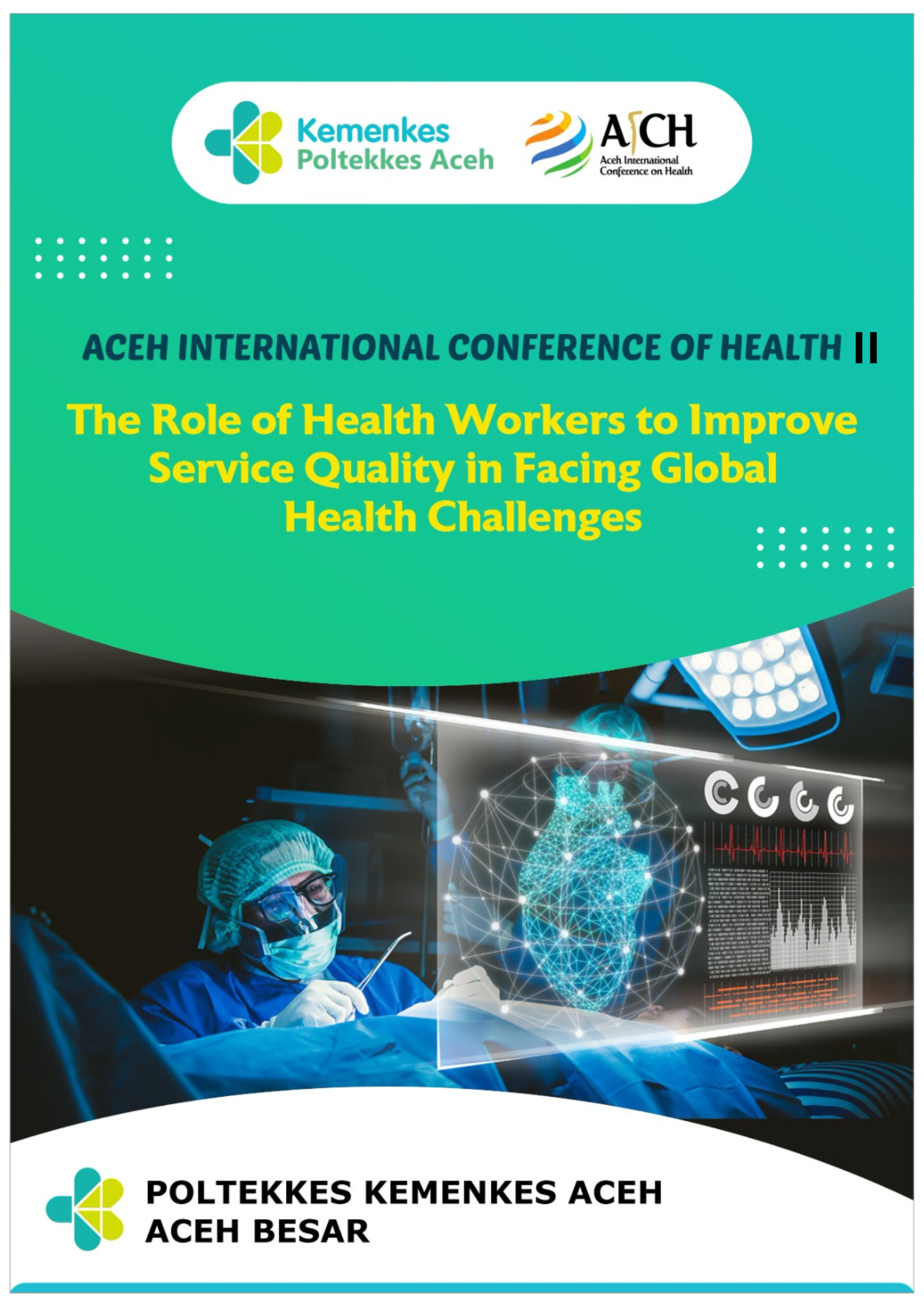COMMUNITY EMPOWERMENT MODEL IN PREVENTION EFFORTS NUTRITION PROBLEMS IN TODDLERS IN THE COMMUNITY
Keywords:
Empowerment, community, efforts, Management, nutritional problems, infantsAbstract
Community involvement through active participation is essential for accelerating the handling of nutritional problems in children. The community needs to be engaged early and comprehensively in efforts to overcome toddler nutrition issues. However, this process has not yet been implemented optimally, so effective community empowerment is required. This study aims to identify community empowerment models that are effective in preventing and reducing stunting in Aceh. The research uses an exploratory qualitative design, with data collected through Focus Group Discussions involving village heads, village officials, posyandu cadres, nutrition workers, and midwives (10 participants). The findings show that the prevention of nutritional problems in villages is a shared responsibility in which each stakeholder must carry out their respective roles. The village head acts as a person in charge, motivator, and financial supporter; posyandu cadres serve as field implementers; and village community institutions act as participants in nutrition-related activities. Collaboration among all stakeholders is needed in planning, implementing, and monitoring programs, as well as capacity building and training for program implementers. A second FGD was conducted with 10 mothers of toddlers. Themes revealed include: children’s food composition generally consists of carbohydrates and protein; eating patterns are three times a day with irregular snacks; vegetables are cooked openly after being washed; fruits are washed before peeling; children’s food is sourced from local ingredients; and mothers make efforts to provide nutritious meals that support children’s growth. It is expected that government, communities, private sector, and health workers actively contribute to tackling toddler nutrition issues. Mothers also need to improve nutrition literacy and good feeding practices within the family.
References
Almatsier, S. (2001). Basic principles of nutritional science. Gramedia Pustaka Utama; Jakarta
Amaliyah, E., & Mulyati, M. (2020). Empowerment for Children Aged Less Than 5 Years with Stunting: A Quasi-Experimental Design. Jurnal Ners, 15(2), 173. http://dx.doi.org/10.20473/jn.v15i2.19494
Azwar, A. (2000). The magnitude of the problem of malnutrition in toddlers in Indonesia today and the government's breakthrough efforts in dealing with it. Indonesian Public Health Magazine.Year XXVIII. Number 10. Year 2000.
Berg. (1986). The role of nutrition in national development. Rajawali: Jakarta.
Chit, T. M., Kyi, H., & Thwin, A. (2003). Mothers' beliefs and attitudes towards child weight, child feeding and related practices in Myanmar. Nutrition and Health, 17(3), 231-254. https://doi.org/10.1177/026010600301700306
Dear Sir,D. (2023). Nutrition Problems, Our Common Problems. https://ayosehat.kemkes.go.id/problem-gizi-perprobleman-kita-bersama
Feldman, R., Keren, M., Gross-Rozval, O., & Tyano, S. A. M. (2004). Mother–child touch patterns in infant feeding disorders: Relation to maternal, child, and environmental factors. Journal of the American Academy of Child & Adolescent Psychiatry, 43(9), 1089-1097.
General guidelines for balanced nutrition. Ministry of Health of the Republic of Indonesia, 2004, (retrieved on June 28, 2019).
Jones, R., Haardörfer, R., Ramakrishnan, U., Yount, K. M., Miedema, S., & Girard, A. W. (2019). Women's empowerment and child nutrition: The role of intrinsic agency. SSM-population health, 9, 100475. https://doi.org/10.1016/j.ssmph.2019.100475
Mertler, C. A. (2019). Action Research; Improving Schools and Empowering Educators. Sixth Edition, Sage Publishing, USA.
Mertler, C. A. (2020). Action Research_ Improving Schools and Empowering Educators (6thed.). SAGE Publications Inc: USA.
Ministry of Health of the Republic of Indonesia. (2000). National Food and Nutrition Action Plan (RAPGN) 2001-2005. Ministry of Health Republic of Indonesia: Jakarta.
Moeloek, N., F. (2016).The Importance of Community Role in Nutrition Development National.Mediakom Edition 76 Pages 44-47, November 2016.
P2TM Ministry of Health of the Republic of Indonesia. (2018). 1 in 3 Indonesian Toddlers Suffer from Stunting – Directorate P2PTM. Kemkes.Go.Id (pp. 18–21).
Pender, N. (2001). Health promotion in nursing practice. 4th ed. DNLM.
Polit, D. (2001).Essentials of nursing research: methods, appraisal, and utilization.5th ed, Lippintcott : Philadelphia.
Septikasari, M. (2018). Child Nutritional Status and Factors Affecting It. First ed., UNY Press, Yogyakarta.
Susilowati and Kuspriyanto. (2016). Nutrition in the Life Cycle. Bandung: Refika
The role of nutrition in the growth and development of toddlers, Dharmawanto, 2005. , (obtained June 14 2019).
Tobarasi, I. (2019). Get to Know Stunting and Its Prevention. Jakarta.
Uce, L. (2015). The Golden Age: an effective period for designing Children's Quality. Journal Bunayya Children's Education, 1(2) .
Widyawati, et al. (2016). Analysis of the provision of complementary feeding with nutritional status in children aged 12-24 months in the Lesung Batu Empat Lawang Working Area. Journal of Public Health Sciences.7 (2) : 1-11
Wirhatmala, RR, and Dwidjowiyoto, RN (2007). Empowerment Managemen of Introduction and Guide to Community Empowerment. PPT Elekmedia Komputindo, Gramedia, Jakarta.)
Wong, W.D. (2001).Wong Essentials of pediatric nursing.6thed. Mosby Inc : St. Louis.





